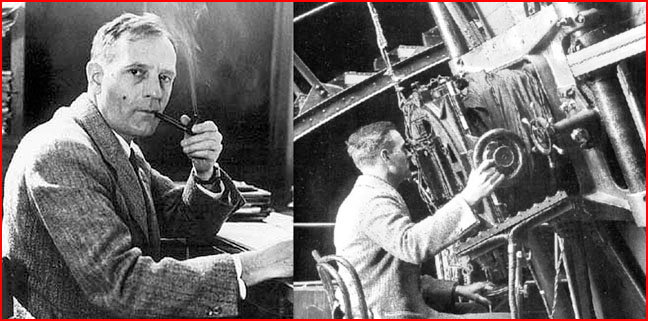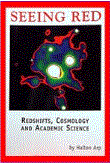|
|
||
 Credit: Edwin Hubble |
||
|
pic of the day Links:
Society for
Redshifts, Cosmology and Academic Science Order Link $25.00
|
Nov 09, 2004 A common belief today is that Edwin Hubble discovered in 1929 that the universe was expanding and that the Big Bang theory is the unavoidable conclusion from that fact. But what did Hubble actually say? "If the redshifts are a Doppler shift...the observations as they stand lead to the anomaly of a closed universe, curiously small and dense, and, it may be added, suspiciously young. On the other hand, if redshifts are not Doppler effects, these anomalies disappear and the region observed appears as a small, homogeneous, but insignificant portion of a universe extended indefinitely in both space and time." (MNRAS, 17, 506, 1937) What Hubble actually discovered was a correlation among the angular sizes of galaxies, their apparent luminosities, and their redshifts. If we explain this correlation in terms of our most familiar experiences from moving around on the surface of the Earth, we will assume that both smaller and dimmer are related to moving farther away. Redshift, the displacement of light toward lower frequencies, is related to the speed of moving farther away, just as the sound of a car's horn sounds lower as it speeds away (the Doppler effect). Combining these assumptions in an "argument from familiarity" results in the conclusion that the farther away a galaxy is the faster it is moving away--just as happens in our familiar experience with flying debris from an explosion. Therefore, galaxies must have exploded from a single point at a particular time: the creation of the universe. But science is not about accepting what is familiar. Science is about asking further questions: How could the familiar explanation be disproved? What else could it be? Hubble was referring to these further questions with his words "if" and "on the other hand." Until his death in 1953, Hubble continued to argue against an expanding universe/big bang interpretation of the data from his 1929 observations. It took 40 years to discover the evidence that disproved the argument from familiarity: Beginning in the late 1960's, Halton Arp photographed high-redshift objects (QSOs) clustered around and connected to low- redshift galaxies. His observations contradicted the "redshift equals distance" assumption and suggested that "smaller and fainter" meant merely smaller and fainter. But by then the Big Bang had become an object of faith, institutionalized in the astronomical hierarchy and in the professional journals. Asking further questions had become heretical. Arp was ostracized. He lost his access to publishing in the astronomical journals, his prestige and his telescope time because he continued to make observations that contradicted the Big Bang. "If astronomy were a science," a famous astronomer has said, the Big Bang would have been discarded decades ago instead of having become the touchstone of faith and funding. [See Arp's lecture video, "Intrinsic Redshift," for more details of this new picture of the universe.] Available from Mikamar Publishing |
|
|
Copyright 2004: thunderbolts.info |
||

